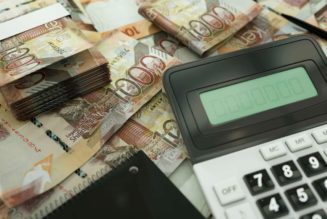Economy
KRA hits used car imports with more taxes, again
Friday September 01 2023

GRAPHIC | CHRISPUS BARGORETT | NMG
The Kenya Revenue Authority (KRA) has hit used car importers with a fresh round of tax increments after capping the maximum depreciation rate at 65 percent of the value of the vehicle from 70 percent previously.
Pamela Ahago, the acting commissioner for the Customs and Border Control department, instructed the KRA staff to apply a new depreciation rate schedule for cars effective Friday.
The directive will see taxes rise by more than 14 percent for vehicles manufactured in 2016 — largely imported by dealers currently because of Kenya’s eight-year age limit for used cars.
Read: Used and new vehicle dealers fight over automotive policy
Lowering the maximum depreciation rate, which the taxman says is in line with other countries in the seven-nation East African Community trading bloc, will raise the value applied when calculating import duty.
An increase in import duty has a corresponding impact on excise duty and value-added tax as the value is compounded for taxation purposes.
Ms Ahago said the enforcement of the new valuation schedule follows an order by President William Ruto during an engagement forum with stakeholders at the Port of Mombasa on July 29 that required the KRA “to harmonise the valuation parameters of used motor vehicle units”.
“In compliance with this [Ruto’s] directive, Kenya Customs will apply the depreciation schedule…that was adopted by the East African Community Council of Ministers,” she wrote in a memo to staff on August 29. “All staff are required to adhere to this valuation with effect from September 1, 2023.”
The worth of a car reduces with time due to natural wear and tear from the time it was manufactured hence reduction of the value for taxation purposes up to a limit of eight years.
An importer of a Toyota Premio with a current retail selling price (CRSP) of Sh3.27 million will, for example, pay an estimated Sh1.096 million in taxes from Friday, up from Sh939,221 previously.
This is a rise of Sh156,537, or nearly 14.29 percent, in import, excise and VAT charges, excluding import declaration fees and railway development levy.
The additional costs will likely be passed onto buyers, according to dealers. The above value assumes the car’s engine capacity is 1800cc as the excise duty ranges between 20 percent and 35 percent of the customs value and import duty based on the size of the engine.
“There’s definitely going to be an upward adjustment in [used car] prices,” Charles Munyori, the secretary-general of the Kenya Auto Bazaar Association (Kaba), which represents used car dealers, told the Business Daily.
“This is because the use of 65 percent depreciation as opposed to the current 70 percent means there’s going to be an extra five percent [of the value of the vehicle] that is going to be added when calculating the [import] duty.”
The used car dealers, however, supported the move to apply the first year of registration of the vehicle under the new schedule as opposed to the first month of registration previously used by the KRA for taxation purposes.
Mr Munyori said the new schedule ensures importers pay similar duty for vehicles of the same class provided they were manufactured in the same year unlike previously when the duty could vary based on the month the car was assembled.
“What has happened is that if a car was manufactured in 2016 either January or December, you pay the same duty. That is the only thing that they [KRA] have rectified, but now the duty has gone up because they have limited the depreciation value,” he said.
“What is going to happen with the switch to using year of registration is that we expect increased availability of the vehicles because you have a whole year to choose when to import unlike previously when we were limited because the duty for a vehicle could change based on the month they arrive.”
The new development has set the stage for another round of increases in prices of second-hand vehicles, which account for more than three-quarters of cars on Kenyan roads, after import duty was raised to 35 percent from 25 percent in July.
Motor vehicle dealers and assemblers had earlier raised car prices citing depreciation of the shilling, reduced imports of used units and rising borrowing costs.
Production of cars had slowed down globally in the wake of the disruption caused by the Covid-induced shocks, including shortage of semiconductors, which are a critical component in modern vehicles.
Read: KRA will allow used car importers to defer taxes
The shilling, on the other hand, has been weakening against the US dollar, losing about 17.9 percent of value since the beginning of the year.
The increased cost of operation had prompted the dealers and assemblers of new vehicles to adjust prices upwards to recoup the expenses and protect margins even before the duty on finished units was enforced.









